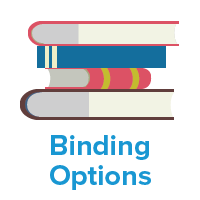When you want to find the right binding for your book, one of the best options to choose is flexibound. This binding has been around for quite some time, and it certainly has its fair share of advantages. People love it and the fact that it can layflat makes the book a lot easier to read, write and draw on.
Defining Flexibound
Flexibound is a binding style most popularly used for agendas and journals, but has other uses like cookbooks, childrens book, yearbooks and more. Its cover stock is between paperback and hardback. The cover is made using a flexible card stock, instead of going with a rigid cardboard stock. What that means is that you have a sturdier cover that is also flexible. The binding also comes with smyth sewn binding allowing the book to layflat.
Is it efficient though? Yes. Flexibound is great because it’s robust and it combines multiple binding ideas into something that’s efficient. For example, flexibounds are used for Bibles as it can have a lot of pages in it and not break easily, but also light enough to carry around with you.

What are some benefits of going with a flexibound?
Flexibound does come with its wide range of benefits and features. For example, one of the main advantages is that it costs less when compared to hardback binding. It’s more expensive than paperback, however it does look amazing and it adds that extra style and value you would want from it.
You have head and tail bands as well as endpapers that make it more durable and stronger than softcover books. There’s also the fact that you can use a multitude of materials for flexibound books. These include gloss and matte lamination, imitation leather, cloth, and linen.
You can have different features added to your book too such as ribbon, elastic closure, debossing, foil stamping, spot UV, and more.
Lastly, flexibound is very convenient to carry around as they are lighter than hardcover books. This is what really sets flexibound binding apart when compared to all the other options presented out there.
Conclusion
If you’re looking for that special book binding that looks great and is reliable and efficient, then flexibound is a great contender. It’s durable, it has a great look and feel to it, and the quality you receive is very impressive. Many authors choose flexibound binding for their cookbooks, children’s books, yearbooks, and corporate printing, ensuring large quantities of quality books and journals can be printed while reducing the cost of printing them.







